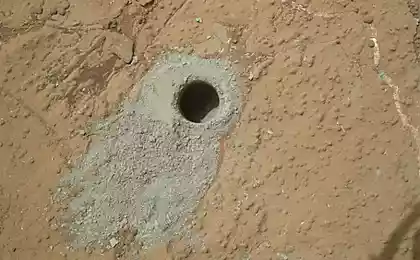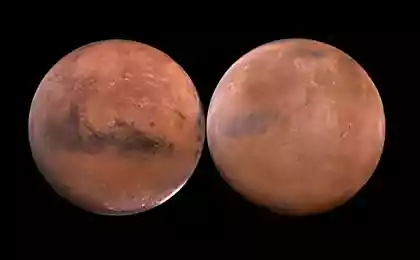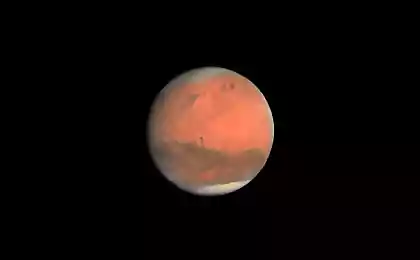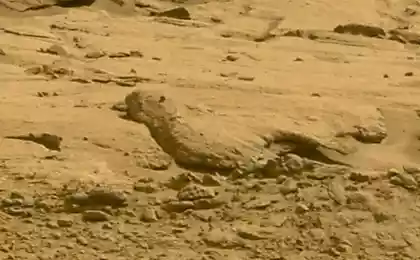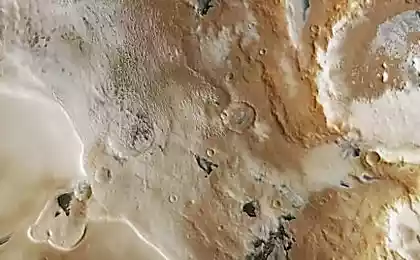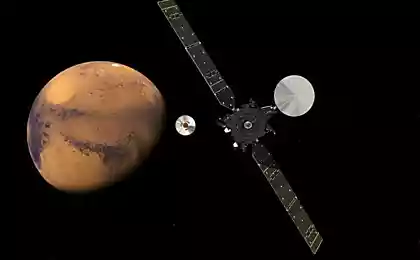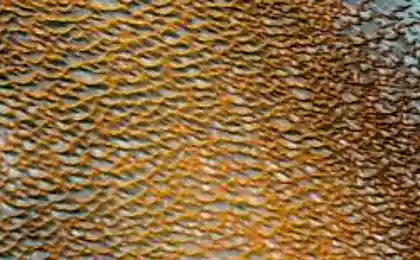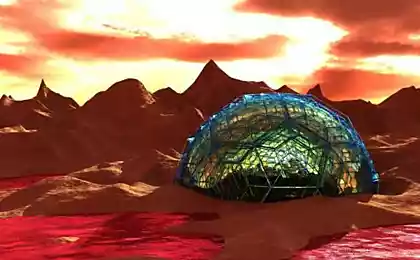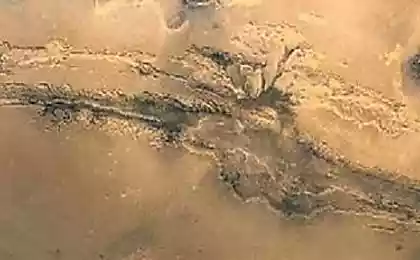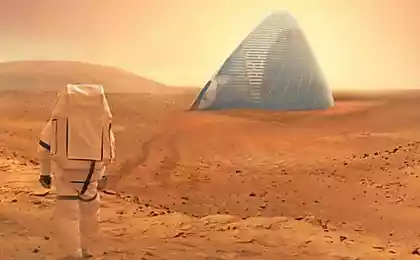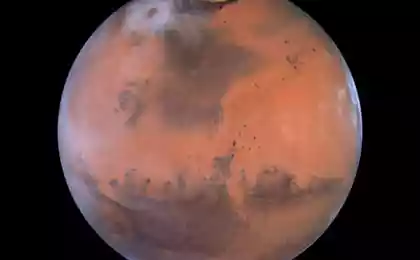1715
Interesting facts about Mars
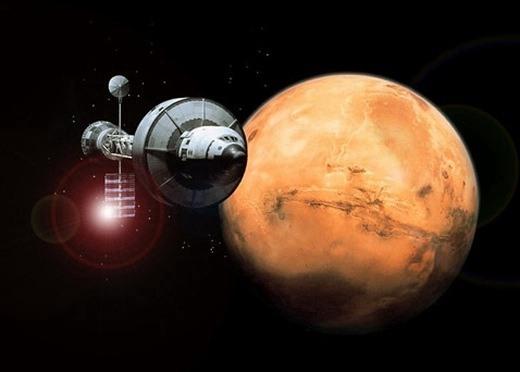
The Egyptians gave the first recorded name of Mars - "Gore Dashr" ("Red Mountain"). Babylonians called him "Nergal" ("Death Star"). The Greeks and Romans named the planet after their gods of war Ares and Mars respectively. The Jews called it "Maadi" or "one who blushes." Many ancient peoples believed that the reddish hue of the planet comes from this blood shed on Mars.
The month of March is named for Mars.
The symbol of Mars looks like a shield and spear of the god Mars / Ares. This symbol also represents the masculine.
The ancient Greeks believed that the Earth was the center of the universe and that Mars - one of the five wandering stars orbiting around our planet.
Egyptians called Mars "reverse wanderer" because, according to their observations, he moved to the opposite side of the constellations of every 25, 7 months.
Mars red iron oxide must also known as rust, consistency similar to talc. Speaking literally, metal rocks on Mars are rusting.
The atmosphere of Mars (mainly consisting of carbon dioxide) is so sparse that the water can not exist on a planet in a liquid form - it can only be as a vapor or ice. Liquid water for many scientists is comparable to the "Holy Grail" of Mars.
No man could survive at low pressure Mars. If you get to Mars without a spacesuit, the oxygen in your blood literally would turn into bubbles, which would lead to instant death.
If you were traveling at a speed of 100 km per hour to get from Earth to Mars, you would have needed 271 years and 221 days.
In the atmosphere of Mars is no ozone layer, so the surface of Mars is buried in lethal doses of radiation each time the sun rises.
Mars is the largest in the solar system, a maze of intersecting canyons known as Noctis Labyrinthus («maze night»).
Mars happen largest and most ferocious dust storms in the solar system. Speed winds in these storms often reach 200 kilometers per hour, they can last for weeks and cover the entire planet. Usually there are storms on Mars, when the planet is closest to the sun.
Only 1/3 of all spacecraft sent to Mars, successfully carried out his mission that prompted scientists to think about the existence of Martian "Bermuda Triangle" or "the Great Galactic ghouls" who loves to eat spaceships.
In 1976, the unit Viking I photographed on Mars mesa, outwardly resembling a human face. Many organizations and individuals interested in extraterrestrial life, argued that the "face" was created by intelligent beings. Although the research station "Mars Global Surveyor" (1997-2006) discovered that the "face" - most likely just an optical illusion, people who believe in the "face", asked the NATO exposing data with the new image before it was released in press.
In the Renaissance, Mars played a central role in one of the biggest and brightest intellectual battles in the history of Western Civilization: Is the Earth the center of the universe. Nicolaus Copernicus (1473-1543) consistently explained that Mars moves across the sky in the opposite direction, because the Earth overtakes Mars in its orbit around the sun.
Mars formed about 4, 5 billion years ago and has a length of about 4,000 miles (half the diameter of Earth). Since most of the Earth is covered by oceans, the amount of land surface on both planets about the same. Mars is also much easier to Earth, its mass is about 1/10 the mass of our planet. Mars - the fourth planet from the sun and the last "earthly" (rocky) planets (all the planets are located on more distant orbits, gaseous).
The terrestrial area closest to the current conditions on Mars - it's Antarctic desert. However, even the most severe areas of the Earth suitable for life is much more than the surface of Mars.
Cora Mars Earth's much thicker and is solid, unlike the earth's crust, consisting of several moving plates.
The moons of Mars, Phobos (fear) rises in the west and sets in the east twice a day. Deimos (panic), on the other hand, requires 2, 7 days to ascend to the east and go west. The moons of Mars are named in honor of the twin gods - panic and fear - accompanying the battles of Ares (Mars).
Mars has 37, 5% of gravity of the earth. This means that a person weighing 45 kg on Earth, Mars will weigh only 17 kg and can jump three times higher.
The average temperature on Mars is -27 ° C and can range from - 96 ° in winter to 22 ° in summer.
During missions to Mars Viking scientists worried apparatus for entry in the Martian environmental conditions earthly microbes.
Seasons on Mars twice as long as the earth, as Mars requires 687 days to circumnavigate the Sun, twice more than the Earth, with its 365-day journey.
Without such a large balancing the moon, like Earth, Mars periodically deflected to the sun much more than usual, thus creating a warm summer.
During the Martian winter for almost 20% of the air freezes.
The first person to observe Mars through a telescope was Galileo Galilei in 1609.
NASA and ESA (European Space Agency) intend to cooperate on future missions to Mars, including tentative return of the expedition, as well as landing a man on Mars by 2035.


